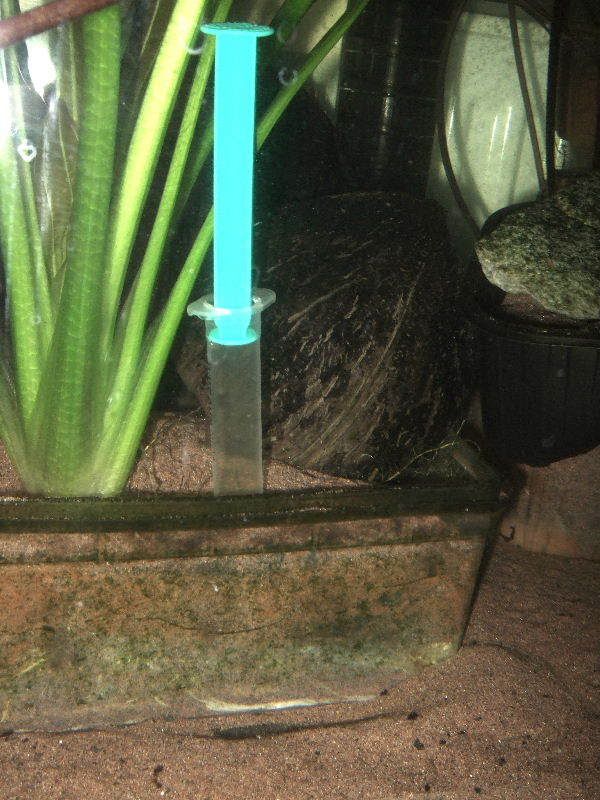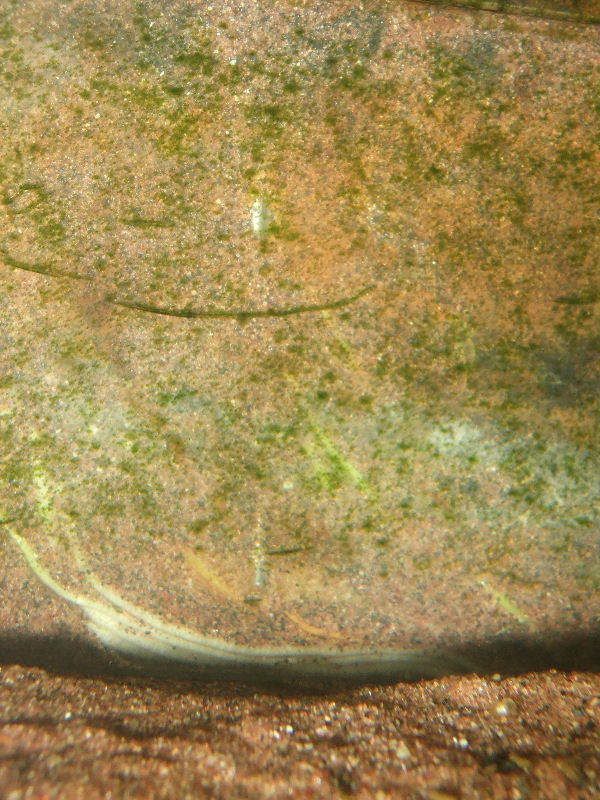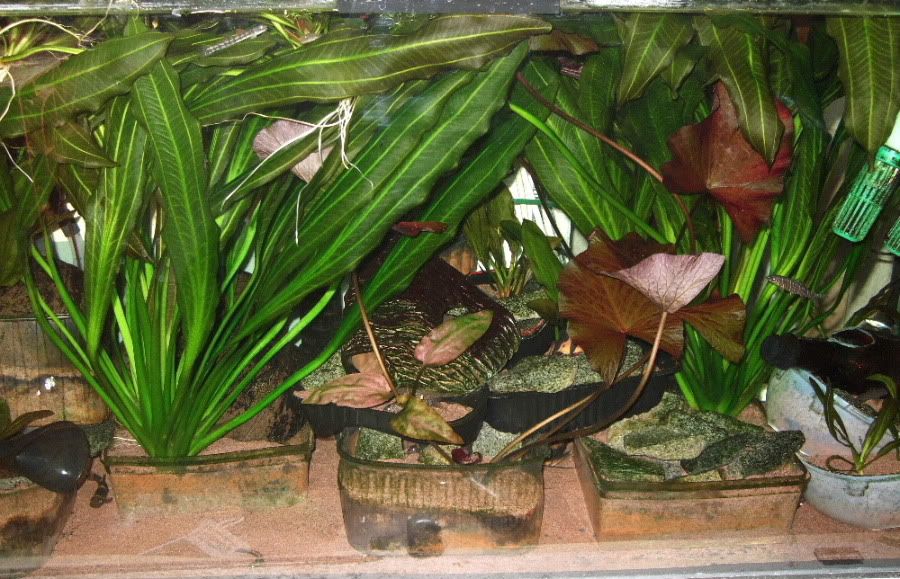Page 1 of 1
Are Kuhli's sensitive to Micronutrients?
Posted: Sun Feb 24, 2008 6:35 pm
by VinsonMassif
I have a 4' 60g tropical tank which has been running well for 6 months now. I have 24 Kuhli, a breeding pair of Platinum white Angelfish, and 1 4" Elephantnose, a twig catfish, plus a few straggler neon's I couldn't catch lol.
It is at 79*F. Ammonia and nitrite undetectable, Nitrate 10ppm, kh2, pH 6.4. I add Flourish Excel 5ml daily, and NPK ferts 5ml daily.
I wanted to make my own micro nutrient ferts after being recommended by a friend. I used a chelated trace element mix and added 50g mixed into 1L of RO water. It is kept in the fridge.
The components are:
K - 22%
Mg - 2%
Fe - 1%
Mn - 1%
Cu - 0.8%
Zn - 0.8%
B - 0.2%
S - 13%
I dosed 5mL with the other ferts in the morning. Within 2 hours almost all the Kuhli were going nuts climbing the walls. They were on 12V supply. However they never lost ANY of their colour, never went pale.
Needless to say I did water changes, 3x 75% over the next 24 hours. Then the Kuhli all settled down and are behaving like they usually do.
So were they reacting to one of the ingredients ie. Copper? As in, is it really that toxic in such minimal quantities?
Here is the tank, I have added some flat schist rocks since this snap.

Posted: Sun Feb 24, 2008 6:37 pm
by Mark in Vancouver
It sounds like something got to them. Kuhlis are susceptible to all kinds of tank treatments, and copper is not good for them, but I'd be surprised if such a small amount caused the reaction.
See if you can lay off the ferts for a few weeks and find out if they're really called for.
Posted: Sun Feb 24, 2008 8:22 pm
by VinsonMassif
Thanks for the reply. I did trial no ferts/supplements for 3 weeks in December. My plants stopped growing. I am running 2wpg lights - 3x 40W T5 HO 6700k tubes.
I have been using Flourish as a supplement, an NPK mix, and Excel regularly up until now with good effects.
I was dosing traces 3 times a week. Most weeks I didn't dose NPK on weekends, so saying daily is not entirely accurate

I have not seen any adverse effects up until my DIY mix. Though I have used it on a loach-free tank with no noticeable ill effects. My plants respond well is all.
Also I do 30% water changes every second day on all my tanks. So nothing gets to build up. I run CF-1200 canisters on my tanks, use spray bars, and include air stones for aesthetics.
I guess I will just go get some more Flourish to use in my Kuhli tank. No big deal.
Posted: Sun Feb 24, 2008 8:49 pm
by Diana
I run 2 wpg on most of my tanks, and am dosing EI as regularly as I can.
I dose K and P 3x per week, N as needed.
Alternate days I dose CSM+B and a little more iron.
I dose Excel @ 1 ml per 10 gallons daily.
All tank measurements are in American gallons, and are nominal tank volume, meaning the tank was labeled 10 gallons, might really hold 8 gallons, but I dose this tank as if it really held 10 gallons.
I have not had problems with any of my Loaches.
Perhaps your tap water already has some copper in it, and the added amount with the fertilizer was enough to put them over the edge?
Plantex CSM + B is a dry mix from from Greg Watson (new USA supplier is
www.aquariumfertilizer.com )
All minerals are chelated:
Mg 1.5%
Cu .1%
Fe 7.0%
Mn 2%
Mo .06%
Zn .4%
I am not sure how much Boron he adds to the mix, it might say at Greg Watson's site, or that info might have been moved to Aquarium Fertilizer.
I also add a bit more chelated Iron, but have yet to get a reading out of my iron test kit. I think my plants are gobbling it all up really fast.
I mix a tablespoon (15 ml) of CSM+B and the same amount of Epsom salt (a source of Mg) and 1 teaspoon (5 ml) of chelated Iron with 500 ml of water, then dose at the rate of 1 ml of the stock solution to 4 gallons (Again, American gallons = 15 liters) of tank size.
Macros are:
Potassium Nitrate, dosed per test results, I try to keep the nitrates above 5 ppm.
Mixed together are:
3 T (15 ml) Potassium sulfate
.5 t (5 ml) Potassium Phosphate
Mixed with 1 liter of water, then dosed @ 1 ml per gallon of tank volume.
My tap water is fairly soft (GH and KH stay pretty close to 4-5 degrees) but the pH is high. Depending on season it ranges from 7.5 to over 8. The high pH is supposed to not corrode the pipes. Old plumbing in the street was recently (couple of years ago) replaced with plastic (I think- I know it is new). House plumbing is Copper, done about 15+ years ago.
I can keep shrimp and snails alive in any of my tanks as long as the fish do not eat them. Since most tanks actually have fish that will hunt down such inverts, this limits the snail population to the filters, and the shrimp population to a couple of tanks with small fish.
Posted: Sun Feb 24, 2008 10:09 pm
by VinsonMassif
Thanks for that Diana. I will go refine my dosing plan. I have been reading up on EI and the rest @ Barrreport.com. Fabulous site for info.
Our house was replumbed and all pipes were replaced 3 years ago. In the last year our neighbourhood had all water pipes replaced with plastic, plus we live 2mi. from the Water plant. I did ring them and they said they would get back to me, but the Cu in the water was next to nothing according to them.
The town water comes out of the tap at 7.0pH, KH0-1, not sure about GH. After 24 hours the pH settles to 6.6. Ammonia and Nitrate free. They only use Chlorine, no Chloramines at all.
Posted: Mon Feb 25, 2008 1:31 am
by mistergreen
just make sure to not overdose on micro-nutrients, hence the name micro

with your numbers, you can go with just 1ml per week or whenever you remember to does micro-nutrients.
It's (m-n) not too crucial unless your leaves are deformed or necrosis starts to form.. A good water change sometimes will provide some if not most of the micros.
K and Mg in additon to N, P, Ca, S are not micos btw, they are macros... You might want to dose those separately from you micros.
Attention - far too much Cu
Posted: Mon Feb 25, 2008 8:05 am
by wasserscheu
Coming straight to the point, Im positive your kuhlii reacted on the copper. You added far too much Cu, B and Zn (you exceeded approximately the 10x of a weekly portion).
I estimatet very roughly that you added (again very rough) about 44mg Cu, thus guessing that you have about 180Liter water (I deducted sand and air from the gross volume of your tank) and get roughly 0,24mg/liter (Conversion: 1pound(lb) = 453 Gramm, 1kg = 1000g(Gramm) = 1.000.000Milligramm (mg)).
According to some books you are 2,5 times above the limit of affecting fish, that dose already hurt the plants and reverts the effect, also bacteria are most likely affected highly. Shrimps and similar will be effected strongly. So this is unfortunately a no-go – a deadly one, in regards to copper. Yes plants need copper, but too much kills them.
With Mn you are 5x above recommended dose. (which may be ok with strong plant grow)
K is ok for starting (initial dose) you may have about 6mg/l up to 10mg/l, the weekly consumption may vary of course, some recommend 30mg per week per 100l. (You added perhaps around 1000mg (minus 50%, depending on how K is bound in your fert. I assume K2O, again my numbers are rough)
However you are missing Mg. K/mg should be approx 3/1or at least(0,7).
Some traceelements need each other to get absorbed. Some block others when too much of it. Forexample, will too much iron block other elements - the plant stopps growing.
You added perhaps Fe up to 0,3mg/l. that’s on the upper limit in my point of view. Books say 0,05 is enough. I´m going by approx 0,15 (due to my clowns shredding my Echi´s if below).
Further it´s important, wether the TE´s are chelated or not. Fe will just end up in your filter if not chelated. Chelated Fe, I give even daily as it disappears rather fast.
Cu is almost 100 times less poisoning when chelated.
Some (good) brands have Nxx stoppers in their n-p-k fert´s, make sure you avoid those in your tank (avoids conversion of ammonium to nitrate).
I recommend strongly, to evaluate (or even better to calculate) the weight/Volume (PPM?) when using homemade ferts. This way you have control over the numbers.
Find out your water values from the water supplier, for example I get 22mg/l Mg, so I´m fine with just adding K (in my case I use K2CO3, which has a dangerous ph value, need to be handleded with care! definitely avoid eye-contact with powder, if not you will need a doctor!)
Here a chart of an effective ground(into the substrate tabs)-fert. in comparison to a rose-fert I´ve used to inject into substrate. Btw an important point, plants like Echi´s and Crypto´s need some food by their roots.
The very left row shows how the relation should be
0,45% --- x11,1 --- 5 % N Gesamtstickstoff
0,38 --- x13,2 (viel!) --- 5 % P2O5 wasserlösliches Phosphat
1 --- x7 --- 7 % K2O wasserlösliches Kaliumoxid
0,15 --- x6,7 --- 1 % MgO wasserlösliches Magnesiumoxid
0,0015 --- x6,7 --- 0,01 % B wasserlösliches Bor
0,0011 --- x1,8 (wenig!) --- 0,002 % Cu wasserlösliches Kupfer als Chelat von EDTA
0,015 --- x1,3 (wenig!) --- 0,02 % Fe wasserlösliches Eisen als Chelat von EDTA
0,0015 --- x6,7 --- 0,01 % Mn wasserlösliches Mangan als Chelat von EDTA
0,0015 --- x0,67 --- 0,001 % Mo wasserlösliches Molybdän
0,0011 x1,8 (wenig!) 0,002 % Zn wasserlösliches Zink als Chelat von EDTA
I hope I was of a little help, please reply with any questions if my English (or my logic ) does not translate well…
Good luck with your plants.
Re: Are Kuhli's sensitive to Micronutrients?
Posted: Mon Feb 25, 2008 10:16 am
by jones57742
Folks:
As you know I have very little experience with loaches but I have quite a bit of experience with liquid ferts and plants and am gaining experience with dry ferts.
VinsonMassif wrote:I dosed 5mL with the other ferts in the morning. Within 2 hours almost all the Kuhli were going nuts climbing the walls.
I can believe this story as I lost a Yoyo from fertilizing with an "off breed" liquid fertilizer.
I also; due the cost of Flourish, Excel and Seachem Iron have gotten into the dry fert business.
IMHO, the critical elements are purchasing the dry ferts from a reputable supplier (which you have done) and a decent scale balance (note that the conversion from mass to volume is not generally reliable* although conversions are in Rex's link set forth at the end of this post).
http://balance.balances.com/scales/1
*Varying specific gravity values for differing materials.
The information set forth at the Rex's link has worked for me so far.
http://www.rexgrigg.com/dosing.htm
TR
Posted: Mon Feb 25, 2008 10:56 am
by wasserscheu
@jones… thanks for the links, I would need some supplier just for traceelement (Fe I have), did not find an OEM yet.
I weigh a bigger amount and calculate back via volume (as scales are not measuring that precise with small amounts) I dose than with a very small (0,2ml and 0,02ml) cup (so I am using both methods - kind of).
I´m not done with my formula yet, need to research more and will check also your links in more detail…
Btw… what cracks me up, is that with all that safety stuff in the US, it seems to be fairly easily to buy KNO3 (most of us in Germany get registered when purchasing larger amounts).
@VinsonM…
Sorry about the formating of my above chart, it went nuts when actually submitting the post, it had nice spaces before…however, I´m using similar than above mentioned rose-fertiliser to inject into the ground.
I dilute only 0,2ml per plant (that equals to approx only 4 drops!) with 6ml water and inject that into the sand, every 3 weeks. In the meantime I found another fert. with only 3% P2O5, but no Mg though…
The problem, is that the Echi´s grow too large for that tank (but they also grow little baby-plants)… so I will get just tracelemets in future for the big ones…
Additionally I add Fe and K to the water (Mg is plenty in tap water), good waterchanges I need to do anyway, and that supplies some tracelements too (but not all of them..)
I´ve tested for any emission from the substrate (which is very fine sand), Fe, PO4, and Nxx does not escape from the ground… however it may accumulate their though…
Before:

The roots find the fertiliser (you can see the tip of the needle - which is from the ink-jet refill-kit) some training needs to be done to make sure the fertiliser does not escape along the needle, while injecting... :

After the treatment (the roots in the upper area are babys from the Echi to the right):





